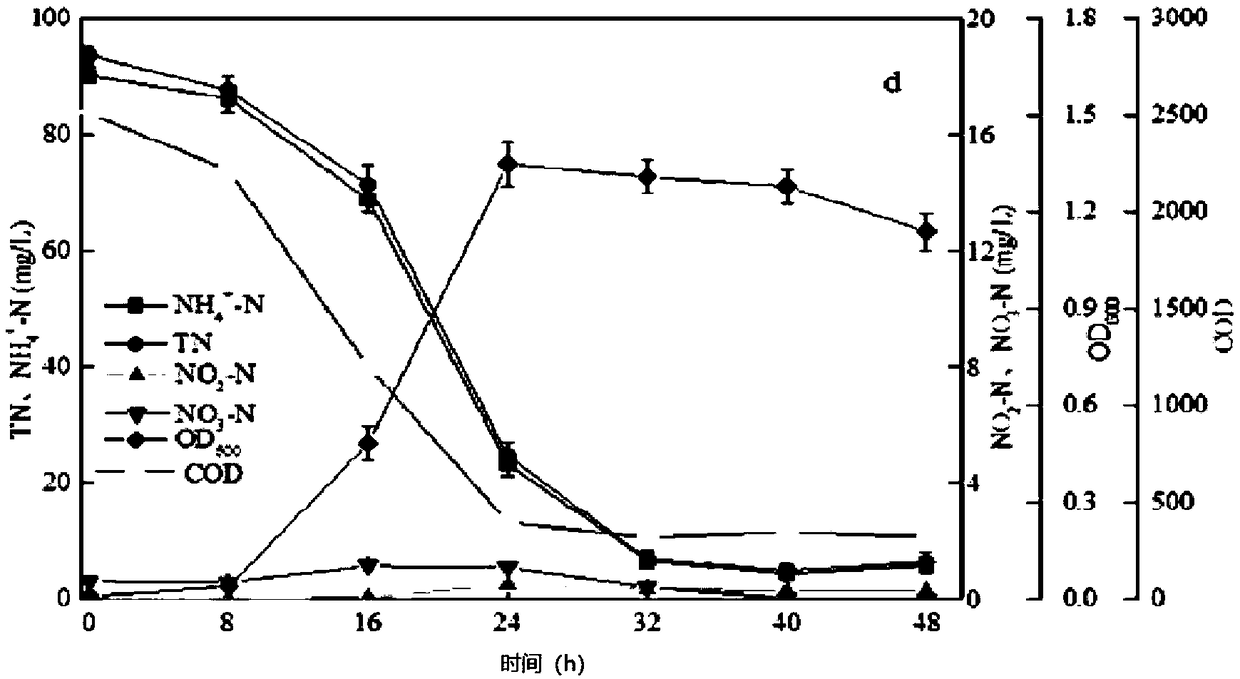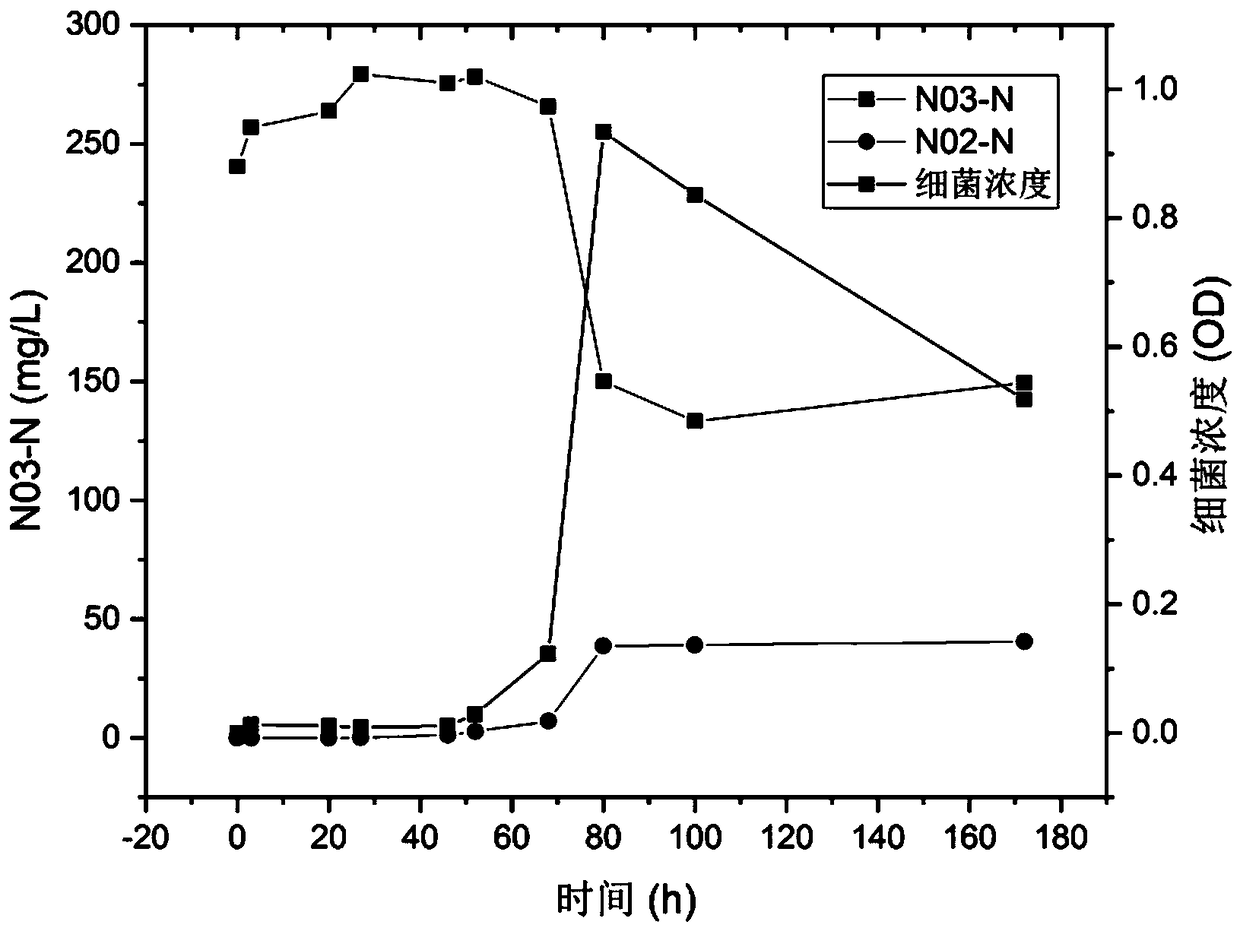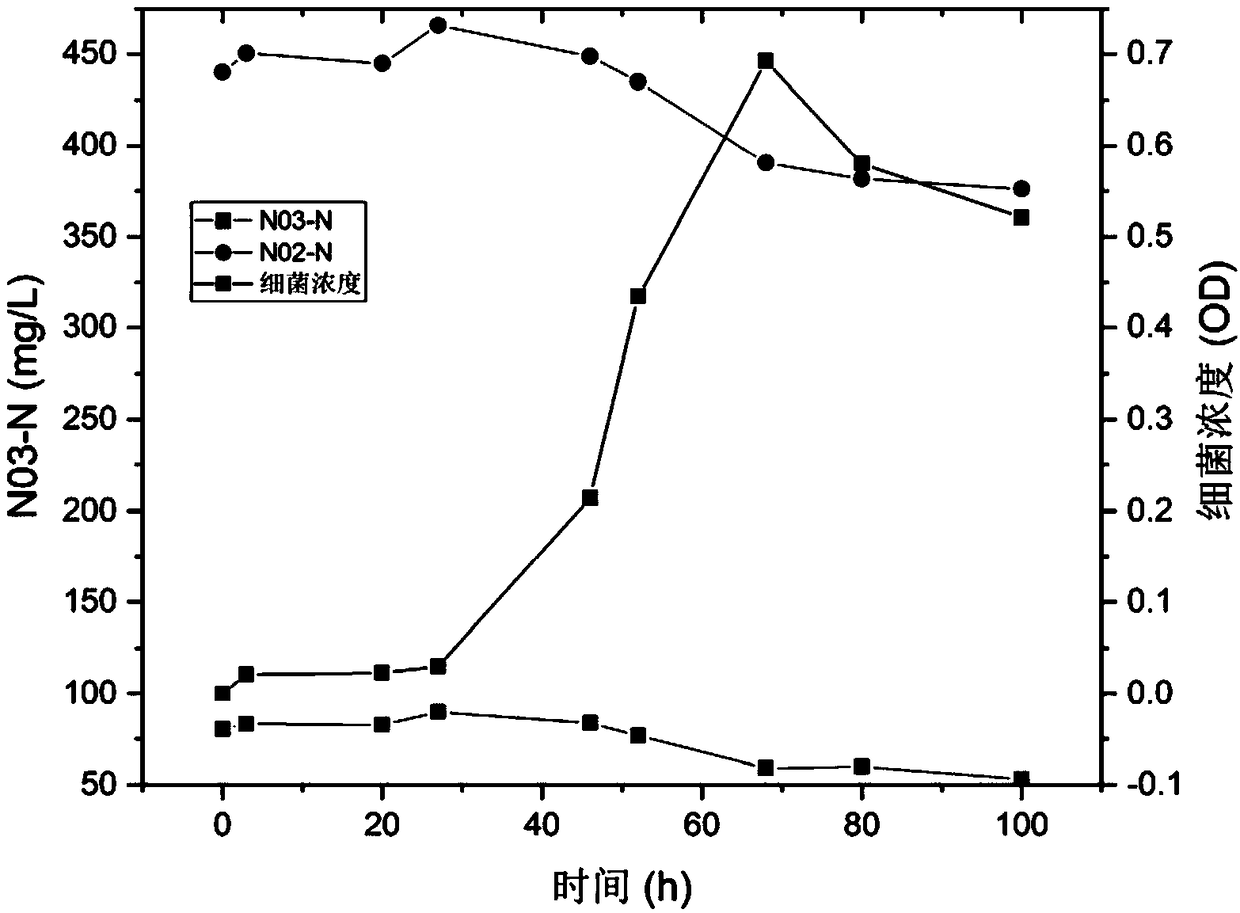Sphingobacterium multivorum and application thereof
A technology of sphingosine bacteria and microbial preparations, applied to bacteria, fixed on or in inorganic carriers, fixed on/in organic carriers, etc., to achieve the effect of restoring the self-purification ability of river channels
- Summary
- Abstract
- Description
- Claims
- Application Information
AI Technical Summary
Problems solved by technology
Method used
Image
Examples
Embodiment 1
[0030] The aerobic fermentation tank of landfill leachate operates stably and the activated sludge of a certain period is used as the separation sludge. On the heterotrophic nitrification medium, the pure Sphingobacterium BT1 strain was isolated by dilution and mixing plate method. The genome of the strain Sphingobacterium BT1 was extracted for 16S rDNA sequencing. The similarity comparison between the sequencing results and the known sequences in the Genbank database showed that the strain Sphingobacterium BT1 had the highest sequence homology with the genus Sphingobacterium, and was identified as Sphingobacterium.
Embodiment 2
[0031] Example 2 Determination of Ammonia Nitrogen Degradation Ability of Sphingobacterium Sphingobacterium BT1
[0032] After activation and enrichment of Sphingobacterium BT1, pipette 1ml of the suspension into 100ml of agar-free heterotrophic nitrification medium, and culture it at 30°C and 160rpm / min for 48 Hour. Take the culture medium every 8 hours. A part of the culture solution was taken to measure the growth curve of Sphingobacterium BT1 at 600nm, and then the remaining culture solution was filtered through a 0.22 μm microporous membrane to detect the indicators of ammonia nitrogen, nitrite nitrogen, nitrate nitrogen and COD in the filtrate. The results are shown in Table 1 and figure 1 shown.
[0033] Table 1 Changes in the degradation rate of ammonia nitrogen by Sphingobacterium BT1
[0034]
[0035] From Table 1OD 600 Index can get the growth curve of the strain. The strain only needs to go through the lag phase of 8 hours to enter the exponential phase. W...
Embodiment 3
[0039] Example 3 Sphingobacterium (Sphingobacterium) BT1 aerobic denitrification capacity determination
[0040] (1) The denitrification performance of Sphingobacterium BT1 was screened and characterized by nitrate medium.
[0041] After activation and enrichment of Sphingobacterium BT1, pipette 1ml of the suspension into 100ml of agar-free nitrate medium or nitrite medium, and culture at 30°C and 160rpm / min , the culture solution was taken every 8 hours to measure the bacterial concentration (OD 600 ), nitrate nitrogen, nitrite nitrogen.
[0042] Table 2 Changes in the degradation of nitrate nitrogen by Sphingobacterium BT1
[0043]
[0044] From Table 2 and figure 2 It can be seen that Sphingobacterium BT1 began to grow at 46 hours and reached the peak at 80 hours. Within 100 hours, nitrate nitrogen dropped from 240.42mg / L to 133.32mg / L, the degradation rate of nitrate nitrogen was 44.5%, and nitrite accumulated from 0 to 40.59mg / L, indicating that Sphingobacterium B...
PUM
 Login to View More
Login to View More Abstract
Description
Claims
Application Information
 Login to View More
Login to View More - R&D
- Intellectual Property
- Life Sciences
- Materials
- Tech Scout
- Unparalleled Data Quality
- Higher Quality Content
- 60% Fewer Hallucinations
Browse by: Latest US Patents, China's latest patents, Technical Efficacy Thesaurus, Application Domain, Technology Topic, Popular Technical Reports.
© 2025 PatSnap. All rights reserved.Legal|Privacy policy|Modern Slavery Act Transparency Statement|Sitemap|About US| Contact US: help@patsnap.com



